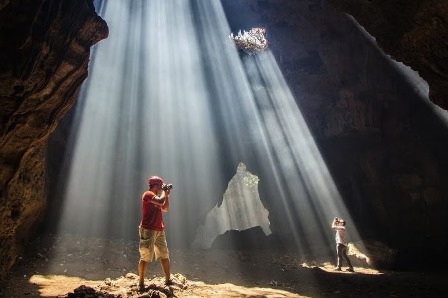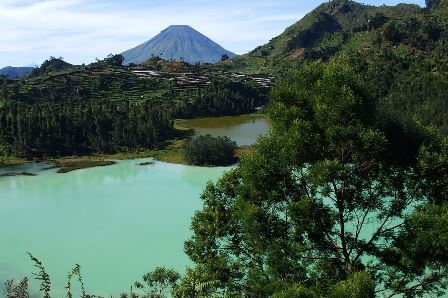Cheap Yogyakarta Packages – If you would like to know Yogyakarta, you can hire car with driver from BP Rent Car (Brian Pastika). The city of Yogyakarta lies in the south of Java Island and bordering with Central Java province and Hindia Ocean in the south. As a Special Region of Yogyakarta in Indonesia, Yogyakarta is the only royal city rulled by a monarchy.
Jogja is the best place when you want to witness some Javanese arts, tradition, culture, batik, wayang puppetry, silversmithing, drama, poetry, and others. By joining our Cheap Yogyakarta Tour Packages, you will be able to experience the excitement of Yogyakarta’s unique activities that you may never have felt before.
Itinerary Cheap Yogyakarta Packages
Contents

Itinerary Yogyakarta Day 1
Pick up from Yogyakarta International Airport (YIA)
Borobudur Temple: Borobudur Temple is the world’s largest Buddhist Temple. Listed as a UNESCO World Heritage Site. This greatest Buddhist monument in the world consists of 9 stacked platforms, six square & three circular, topped by a central dome. Built in the 9th century, the monument has an extensive system of stairways & corridors with 1460 narrative relief panels on the walls and the balustrades.
Lava Tour Merapi: On 25 October 2010 Merapi volcano erupted lava from its southern and southeastern slopes. The eruption brought million cubic of hot stone and sand. The closest village crashed by hot materials and pyroclastic flow. Today, these place use as tourism destination. Yes, we called it Lava tour.
Kali Opak Resto
Prambanan Temple at Sunset: Built in the 10th century, this is the largest temple compound dedicated to Shiva in Indonesia. Rising above the centre of the last of these concentric squares are three temples decorated with reliefs illustrating the epic of the Ramayana, dedicated to the three great Hindu divinities (Shiva, Vishnu and Brahma) and three temples dedicated to the animals who serve them.

Itinerary Yogyakarta Day 2
Early pirk up from hotel
Visiting Jomblang Cave: Jomblang is a vertical cave with thick ancient forest inside there. A forest with different vegetation from the land above it. The cave was formed by geological process when the soil and all vegetation on it crumbled some thousands years ago. The vegetation still exist cause of water from Kalisuci river at the bottom of the cave. A 300 meter street with its attractive all-natural accessory will certainly bring you to the edge of Gua Grubug (Grubug Cave), an area where you can see light from paradise.
Explore Timang Beach: Timang is a small island. You have to across ocean to get there. It is adrenaline challenge and best experience in whole your life. Usually fisherman across to the island to catch lobster using a trap. Sometimes it become favorite place for fishing. But, to get here you have to collect all your courage to across the ocean. This place quiet isolated, not much tourist visit here cause the way so rocky. Even, for local tourist. Not much of them have visit this island.
Visiting Pengger Pine Forest: One of Bantul Regency’s tourist allures is located in Pantirejo Village at Dlingo Sub-District. The name is Pengger Pine Forest! As the name suggests, the site offers a beautiful landscape of pine trees and comfy atmosphere for relaxation. The accessibility is considered good, so all tourists would be able to reach the pine forest without hassles. The next benefit for visiting the forest is related to the variety of activities. It is because visitors are able to do many fun things there, including outbound activities, photography, relaxation, sightseeing, and much more!
Itinerary Yogyakarta Day 3
Pick up from hotel after finish your breakfast
Sultan Palace (Kraton Yogyakarta): Sultan Palace is a traditional palace of Yogyakarta’s King and become the most popular Yogyakarta Places of Interest. It is situated in the centre of Yogyakarta City as well as easy to access from any directions. This Sultan’s palace is also well known as Kraton Kasultanan Ngayogyakarta Hadiningrat is the centre of Javanese culture living museum especially for Yogyakarta region, (Daerah Istimewa Yogyakarta). Moreover, the king and his family are also living in this palace. The palace is also a main direction of cultural development of Java as well as the flame guard of the culture. It is opened daily for tourists who want to see the palace, as well as the Javanese cultures, are living and be preserved.
Tamansari Watercastle: Located near the Kraton, this place was also known as the garden for the Sultan of Yogyakarta. Tamansari was originally built for multiple purposes yet now only several buildings remain. Some of its original functions were a place to rest, to meditate, to work, to hide and to defend the Sultan’s family. In this present day, some of its buildings have now become homes for local residents and only the mosque, resting and bathing space, and underground tunnels are accessible by tourists.
Batik Course: For all of you who want to explore batik and want to master the making process, we provide the best Batik Course in Yogyakarta. Different with another batik course which teach the technique of making batik, we teach the technique of making batik combined with your creativity which resulted your own batik painting masterpiece. In addition, you will learn to batik along with our artist, so you will be taught directly by them.
Kota Gede Silversmith: Kotagede is an upmarket suburb of Yogyakarta now. It has developed as Yogya’s silver industry since the 1930s. Meanwhile, we can discover the beautiful silver handicrafts from one house industry to others with a variety of handcrafts. Moreover, Yogyakarta is well famous as a centre of silversmith in Indonesia those are most coming from this town. You may purchase and pick one of them for your souvenirs when travelling to Yogyakarta or join with our popular Yogyakarta Tours.
Malioboro: Jalan Malioboro (Javanese: ꦢꦭꦤ꧀ꦩꦭꦶꦪꦧꦫ, romanized: Dalan Maliyabara; English: Malioboro Street) is a major shopping street in Yogyakarta, Indonesia; the name is also used more generally for the neighborhood around the street. It lies north–south axis in the line between Yogyakarta Kraton and Mount Merapi. This is in itself is significant to many of the local population, the north–south orientation between the palace and the volcano being of importance.
Itinerary Yogyakarta Day 4
Pick up from hotel after finish your breakfast
Dieng Plateau Tour: The Dieng Plateau is a marshy plateau that forms the floor of a caldera complex on the Dieng Volcanic Complex in Wonosobo and Banjarnegara, Central Java, Indonesia. Referred to as “Dieng” by Indonesians, it sits at 2,000 metres (6,600 ft) above sea level, far from major population centres. The name “Dieng” comes from Dihyang which means “place of the ancestors or gods”.
Part of General Sudirman’s guerrilla campaign during the Indonesian War of Independence took place in the area.
Itinerary Yogyakarta Day 5
Pick up from hotel, drive to Solo, journey will take around 1.5 hours.
Mangkunegaran Palace: Built in 1757 after a bitter struggle against the founder
Triwindu Flea Market: Solo’s flea market is the place to search for antiques of Surakarta, Pakubuwono II, by his nephew Raden Mas Said, who was later crowned Pangeran mangkunegoro I. The royal family still lives in the back of the palace, but most of the rest is open to the public for guided tours. including wayang puppets, old batik and ceramics, as well as clocks, vinyl records, coins and vintage cameras.
Cetho Temple: Cetho is one of several temples built on the northwest slopes of Mount Lawu in the fifteenth century. By this time, Javanese religion and art had diverged from Indian precepts that had been so influential on temples styles during the 8-10th century. This area was the last significant area of temple building in Java before the island’s courts were converted to Islam in the 16th century. The temples’ distinctiveness and the lack of records of Javanese ceremonies and beliefs of the era make it difficult for historians to interpret the significance of these antiquities.
Sukuh Temple: Sukuh Temple is a 15th-century Javanese-Hindu temple (candi) that is located in Berjo, Ngargoyoso district, Karanganyar Regency, Central Java, Indonesia on the western slope of Mount Lawu (elevation 910 metres (2,990 ft)). This temple has a height of 87 meters. Sukuh temple has a distinctive thematic reliefs from other candi where life before birth and sexual education are its main theme. Its main monument is a simple pyramid structure with reliefs and statues in front of it, including three tortoises with flattened shells and a male figure grasping his penis. A giant 1.82 m (6 ft) high of Shishna with four testes, representing penile incisions, was one of the statues that has been relocated to the National Museum of Indonesia.



